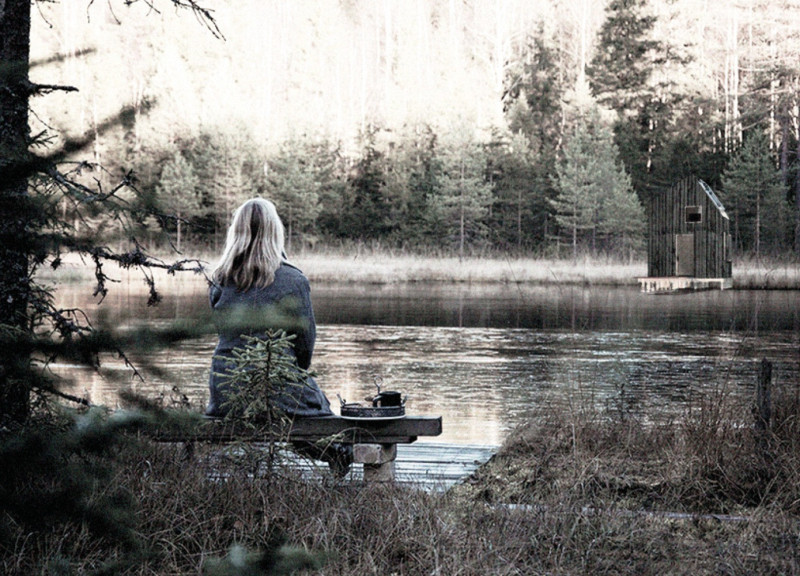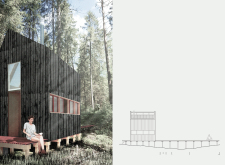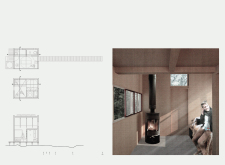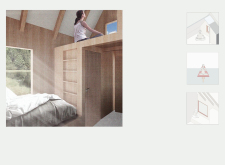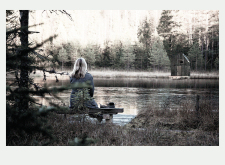5 key facts about this project
At its core, the architectural design represents a thoughtful balance between form and function. The structure is elevated on stilts, which minimizes its environmental footprint and enhances its relationship with the landscape. This elevation not only protects the building from potential flooding but also provides occupants with sweeping views of the natural vistas, reinforcing a sense of immersion within the serene environment.
The primary design component of the dwelling is its use of wood, prominently featured in both the exterior and interior finishes. The wooden cladding creates a warm, inviting appearance while ensuring thermal efficiency, which is a vital aspect of the project’s sustainable ethos. The meticulous choice of materials extends to other elements as well, including metal components for structural stability, expansive glass windows for natural light, and durable concrete foundations that ensure the building can withstand environmental challenges.
Inside, the layout is designed for flexibility and practicality. Spaces are multifunctional, allowing for various uses that adapt to the needs of the occupants. This adaptability is crucial in an era where residential design must respond to changing lifestyles. Lofted areas and built-in furniture solutions maximize space without compromising on comfort or usability. This clever arrangement fosters an environment where residents can engage intimately with both the interior and the exterior, enhancing their living experience.
Architecturally, the building’s large windows play a significant role in the design philosophy. These features not only permit abundant natural light but also create a seamless visual connection with the outdoor landscape. By prioritizing views and light, the design cultivates a sense of openness and tranquility, intrinsic to a peaceful living environment. The integration of outdoor spaces, such as expansive decks that invite interaction with the surrounding nature, further enriches the living experience, encouraging occupants to engage with their environment.
The unique design approaches employed in this project also include a commitment to sustainable practices. Each material choice, structural element, and spatial arrangement reflects a profound consideration for ecological impact. By utilizing renewable and locally sourced materials, the project reduces its carbon footprint while promoting responsible building practices. This conscious design philosophy is increasingly relevant in today’s architectural landscape, where the demand for sustainable living solutions continues to grow.
As the project unfolds through its architectural plans and sections, one can gain a deeper understanding of the innovative ideas that inform its design. The thoughtful integration of space, material, and nature illustrates a contemporary approach to architecture that prioritizes both comfort and environmental stewardship.
For those interested in exploring the nuances of this project, a closer look at the architectural designs can reveal the intricacies of its planning and execution. Delving into the architectural sections offers insight into how the various elements come together to create a cohesive and inviting dwelling. The detailed architectural plans will provide a comprehensive view of the layout and spatial strategies employed, further enhancing appreciation for this crafted living environment.


